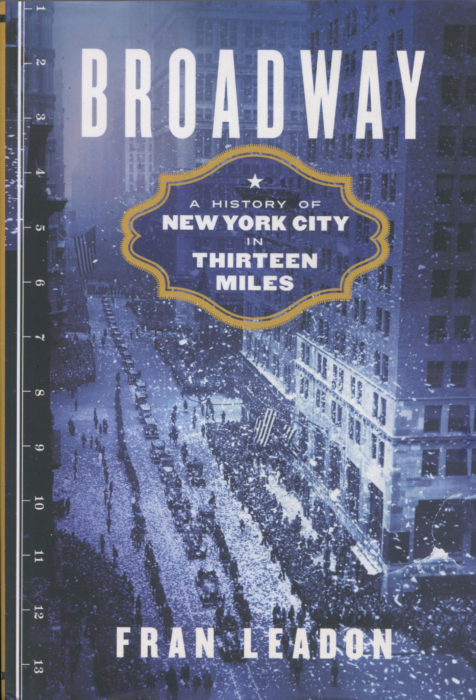
Here are three things about New York City you probably do not know:
[1] Streetlights were first installed in New York in 1697, when every resident was required to light at least one window. Oil lamps were first installed in 1762, but only every 150 feet. And, to save money, the streetlights were not lit on nights when the moon was full. That was the start of the Great White Way.
[2] In 1844 Broadway ran through farmland where there is now the density of the Upper West Side. Where the future 84th Street now sits, there was an isolated farm with a two-story farmhouse facing to the Hudson River a quarter mile away. A failed writer moved there with his family, at first just writing in the farmhouse but later taking a stagecoach “down to the city” six miles each day to various newspaper jobs. In 1845, he wrote a poem that made him famous and an established literary figure. In 1849, he was dead from alcohol. The poem was “The Raven” and that writer was Edgar Allen Poe. You can still find the flat rock he sat on above the banks of the Hudson.
[3] When the George Washington Bridge was opened on October 24, 1931, the first two people to walk across it were two boys, age fourteen and eleven. Actually, they did not walk. They roller skated.
Fran Leadon is an architect and expert on New York City. He is the coauthor of the AIA Guide to New York City. The man knows the city block by block. And mile by mile.
Broadway is the only street that runs the whole length of Manhattan. All thirteen miles — although every survey comes up with different numbers. Most of us grew up thinking “fourteen” miles but it really is “thirteen.” A lucky thirteen.
This book is subtitled “A History of New York City in Thirteen Miles” and it is just that. A history of the city from the 1600s written from the perspective of Broadway as the spinal column of the city, the heart of the city. Those three facts I’ve quoted from the book are just some of the thousand tidbits that stream through the 420 pages of fascinating history on display here.
And while there are no recipes here per se, there are wonderful discussions of restaurants and menus. An entire sub-history of the progress of food from colonial times to the modern. You gain insights into that “upper crust” of society that has always existed and always splurged through food and shopping. Manhattan has literally moved uptown decade by decade and that history is reviewed in superbly researched detail.
The book is organized into thirteen sections, one for each mile. Each section has multiple chapters focusing on the people, the institutions and the challenges faced by the city as it grew at megapace.
Today, traveling down Broadway — it’s one way south from 59th Street — is always hectic. And always has been. While not noted for humor, in 1860 The New York Times factiously suggested that the entire street be dug up and converted to a Venice-style canal with a Rialto-bridge at Broadway and 14th Street in the then-heart of the theatre center of the city. The joke was on The Times because the term “Rialto” was immediately adopted and the theater district was instantly known as the Rialto. As the theaters shifted uptown to Madison Square, people talked about the new Upper Rialto.
History is full of chance and accidents and charming incidents like the creation of “The Raven.” New York’s history is bound to Broadway. And this book is the perfect depiction of that history.
